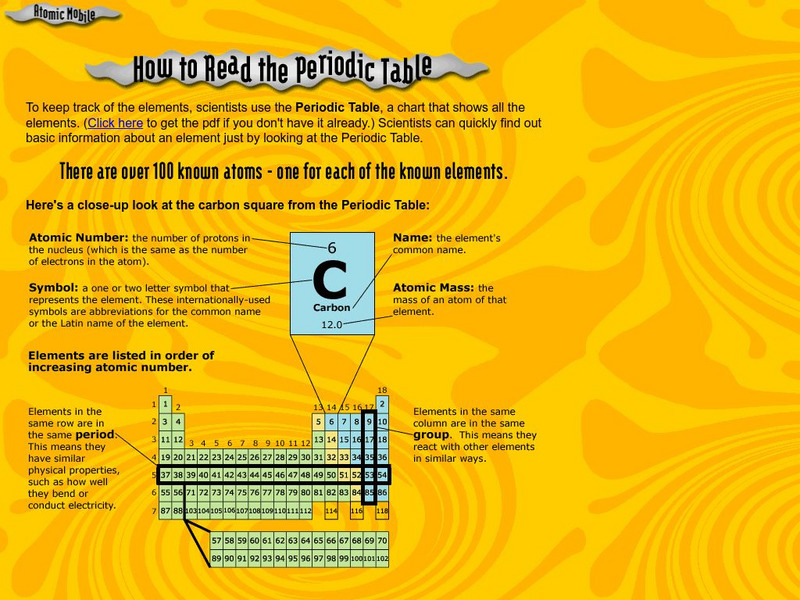American Museum of Natural History
American Museum of Natural History: Ology: Kinds of Biodiversity
Explains what biodiversity is, why it is important, threats it faces, and what people can do to help it survive.
American Museum of Natural History
American Museum of Natural History: Ology: Life in the City
Explore a city park to learn what tiny species live there.
American Museum of Natural History
American Museum of Natural History: Resources: Time Dilation Equation
Using an example of light bouncing back and forth between two mirrors in a rocket, time dilation is explained in this resource. Step-by-step calculations using Einstein's time dilation equation are shown.
American Museum of Natural History
American Museum of Natural History: O Logy: Stuff to Do: Stargazing
Get started on the road to becoming an expert stargazer by following these recommendations for identifying stars, planets, and constellations. Includes an example of a journal that can be used as a record of your investigations.
American Museum of Natural History
American Museum of Natural History: O Logy: Stuff to Do: Make a Weather Station
Make a wind vane, rain gauge, and barometer and learn how to measure wind direction, rainfall, and air pressure.
American Museum of Natural History
American Museum of Natural History: O Logy: Stuff to Do: Atomic Mobile
Illustrated instructions for how to make a model of an atom (an atom mobile).
American Museum of Natural History
American Museum of Natural History: O Logy: How to Read the Periodic Table
An illustrated how-to for understanding how to read and extract information from the periodic table.
American Museum of Natural History
American Museum of Natural History: O Logy: What's the Big Idea? Paleontology
Snapshot reference on paleontology explains how the fossil record drives this area of science.
American Museum of Natural History
American Museum of Natural History: Amazing Albedo
This lesson is a lab in which students use thermometers, white and dark paper, and lamps to measure differences in albedo between the light and dark materials. Connections are made to albedo in Antarctica.
American Museum of Natural History
American Museum of Natural History: Resources for Learning: The Path to El Nino
Through this resource, students explore the history, causes, effects, and patterns of El Nino.
American Museum of Natural History
American Museum of Natural History: Carl Sagan and the Quest for Life in the Universe
A brief biography of American astronomer and science advocate Carl Sagan.
American Museum of Natural History
American Museum of Natural History: Resources for Learning: Bolivia Biodiversity
An overview, in a captioned gallery of images, of the plant and animal life of Bolivia as well as some of the cultural traditions and practices among Bolivian people.
American Museum of Natural History
American Museum of Natural History: Ole Roemer and the Speed of Light
This resource provides a concise overview of the speed of light and the Ole Roemer, the first man to measure it.
American Museum of Natural History
American Museum of Natural History: Case Study: Neutrino Observatories
Observatories allow for study of subatomic particles, neutrinos, which are found nearly everywhere in the universe are featured in this case presented by the American Museum of Natural History.
American Museum of Natural History
American Museum of Natural History: Profile: Georges Lemaitre
Find out about the life and work of the father of the Big Bang theory, Georges Lemaitre. This article describes the origin of the cosmology theory and its growing acceptance among scientists. This is an excerpt from COSMIC HORIZONS:...
American Museum of Natural History
American Museum of Natural History: Dinosaurs: Theropod Biomechanics
How fast could a Tyrannosaurus rex really run? Visitors to this resource will see how scientists use theropod biomechanics to simulate the movement of these large dinosaurs.
American Museum of Natural History
American Museum of Natural History: Dinosaurs: Ancient Fossils, New Discoveries
Visitors to this resource will discover the new things that scientists are learning about dinosaurs by paging through the information about this comprehensive exhibition.
American Museum of Natural History
American Museum of Natural History: Exhibition: Extreme Mammals
Learn about the body structure, habitat, reproduction, movement, and evolution of extreme mammals, both extinct and living, through interative animation and short videos.
American Museum of Natural History
American Museum of Natural History: Creature Feature
A matching game where students match different ocean creatures to their adaptations for survival.
American Museum of Natural History
American Museum of Natural History: It Takes All Kinds to Make a World
Learn about the biodiversity found in the ocean by looking at examples of marine life.
American Museum of Natural History
American Museum of Natural History: Traveling the Silk Road: Take a Journey
Learn about some of the ancient Asian and Middle Eastern cities along the Silk Road between AD 600 and 1200. Highlights Xian, Turfan, Samarkand, and Baghdad, as well as those who traveled by sea.
American Museum of Natural History
American Museum of Natural History: Ology: In Pictures: Journey to the Stars
Two astrophysicists present images of stellar phenomena in this resource and explain why stars are so important to the existence of life on Earth.
American Museum of Natural History
American Museum of Natural History: O Logy: Bio Benefits
What does it take to keep our planet livable? What are the things we need to sustain life? The Bio-Benefits site answers these questions and others pertaining to basic life needs. Click on the hyperlinked words to see interactive...
American Museum of Natural History
American Museum of Natural History: O Logy: Stuff to Do: Buried Bones
A how-to science project with instructions to make a complete dinosaur bone dig site burying chicken bones in plaster of Paris. Click on the starred words to learn more about the topic.














